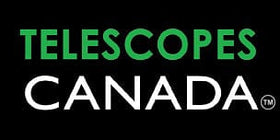Constructing a Concrete Telescope Pier for Astrophotography - Part 1
A Storm of Sheds
I have to admit that I've left a trail of concrete piers (or remnants thereof) behind after moving from and to various parts of Ontario - three piers and counting. The first didn't have a permanent structure around it, but I was able to leave the mount out a lot of the time with a tarp over it, reducing the amount ferrying heavy things around. Having a stable polar alignment was a wonderful thing! I started to build a shed for it and got as far as the floor or so but ended up not going ahead with it as an opportunity entailing moving came into the picture. Note that the shed was growing a lot larger than it really needed to be! All you really need is about 7-8 feet length and width-wise in most cases, unless you want to construct a warm room adjoined to the scope section. You want to make sure your scope has clearance to move about freely and give yourself a bit of room. This pier was left in place in the middle of a large country backyard in the rush of moving and cleaning, in the hopes that the new owners would believe it to be a very sturdily built birdbath.
The First Pier and Shed Floor
The second pier had a modified Home Depot Big Max shed built over it (details on how it was modified in a later post), and allowed the scope and mount to stay in place, making set up much faster. A quick run out with a laptop, pull the roof off, and you're up and running in no time, especially if your mount can remember it's alignment (EQMOD is great for this). This is the same structure I have now, bravely surviving a couple of moves. Note the not-too-visible large metal ground spikes (from Home Depot) used for the back two corners of the shed. The ground slope in the back yard was very steep, and local environmental regulations did not allow filling it in, so the spikes were the way to go to keep the shed level, highly recommended if you have uneven ground that deck blocks will not work for. They work quite well, except when you need to yank them out. Pier #2 was chipped away at and rebar cut with various tools such as an angle grinder until it fell over and rolled down about 20 feet into a shallow ravine (not something you want to be in the way of!), and was chopped up. It's definitely harder to break down crack-resistant concrete than the regular kind!

The Big Max Shed Modified with a Roll-Off Roof

A 12" SCT Scope on the Second Pier with an EQ-6, a Real Workhorse
The third pier was build in a smaller suburban yard, again with the Big Max shed resurrected around it, which worked well, but the light pollution (and Canadian weather) made it difficult to take good images. When this pier's time had come, having learned a lesson or two from the past, a demolition hammer was rented from Home Depot well before moving day, and an afternoon was spend with various people taking turns in gleeful destruction.

Construction of Pier #3 - Much More Level Ground, Much More Light Pollution
It's been some time since the passing of the last pier, with us living in a more brightly lit city area and a busy schedule, astronomy and stargazing is harder to make time for. You don't see the milky way from my current location on the best of days, unlike the last 2 much darker areas (between Waterloo and Stratford). But the little voice in the back of the minds of a lot of us keep whispering to look up when it's clear and check out Today's APOD doesn't ever completely vanish, no matter how much you enjoy and secretly curse the guy who took that amazing shot they posted. The release of newer dual narrowband filters like Optolong's L-eNhance and STC's Duo narrowband filters meant that 1) Astrophotography without intense light pollution and gradients could be tamed to more reasonable and realistic levels, and 2) A colour camera could be used to take images, without needing to invest in a new monochrome CCD camera, filter wheel and a boatload of not-so-cheap filters. And so, the Pier MK IV Initiative begins!.
Continued in Part 2 - Planning, Digging and Discoveries (rarely good things!)


